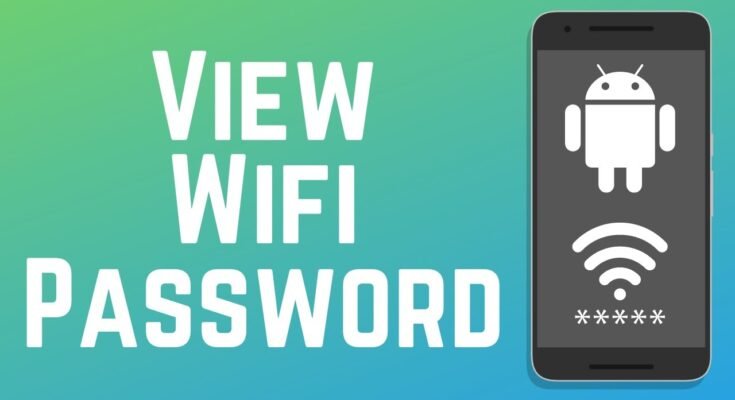Wi-Fi Password Finder Apps: What They Are, How They’re Used, and Why Caution Is Necessary
In an always-connected world, forgetting a Wi-Fi password can be annoying — especially when you’re trying to get work done, stream, or tether another device. That frustration has given rise to a category of software often called “Wi-Fi password finder” apps. But this label covers a wide range of tools with wildly different purposes, legality, and safety profiles. This article explains what these apps actually do, legitimate uses, the risks involved, ethical and legal issues, safer alternatives, and how to secure your network so you won’t need them.
What people mean by “Wi-Fi password finder” apps
When people talk about Wi-Fi password finders, they usually mean one of three things:
- Password recovery tools for networks you own or control. These help you recover passwords that you previously saved on a device or stored in a router’s admin panel. They’re legitimate when used to retrieve credentials for your own network.
- Diagnostic/network utility apps. These show saved SSIDs (network names), signal strength, connected devices, or help you manage connections. They do not reveal passwords unless those passwords are already available to the operating system.
- Tools that attempt to crack or bypass Wi-Fi security. These promise to discover other people’s Wi-Fi passwords by exploiting weak encryption (e.g., poorly configured routers or weak passphrases). These tools are frequently promoted in dubious corners of the internet and carry serious ethical and legal risks.
It’s essential to treat those categories as fundamentally different: category (1) and (2) can be lawful and useful; category (3) crosses into wrongdoing when used to access networks without permission.
How these apps work — at a high level (non-technical)
For lawful recovery and diagnostic tools, the app typically either:
- Reads credentials already stored on the device (e.g., a saved Wi-Fi profile);
- Connects to your router’s administration interface to display or change settings (only if you supply the admin password); or
- Uses system APIs to show network information that the OS already allows you to see.
By contrast, cracking or bypass apps rely on attempting to guess passphrases or exploit known vulnerabilities in router firmware or configuration—techniques that, while technically possible, require advanced knowledge, tools, and often time (and may not work at all). This article does not provide instructions for those techniques.
Legitimate uses
There are perfectly reasonable reasons someone might look for a Wi-Fi password finder:
- You forgot the password to your own home network and don’t have it written down.
- You need to connect a new device that doesn’t offer an easy way to transfer saved Wi-Fi credentials.
- You’re an IT administrator managing multiple networks and need to audit settings or document credentials.
- You want to inspect which networks your device has previously connected to for privacy or troubleshooting.
In these cases, use reputable utilities built into your operating system or well-known network management software provided by your router vendor or your organization’s IT department.
Legal and ethical considerations
Accessing someone else’s Wi-Fi network without explicit permission is generally illegal in many jurisdictions and can be prosecuted as unauthorized access. Even if a tool seems easy to use, using it against a neighbor’s, cafe’s, or employer’s network without authorization is risky and unethical.
Other important legal/ethical points:
- Intent matters — Recovering your own password is lawful; attempting to access a network you don’t control is not.
- Terms of service — Public Wi-Fi providers often have terms that prohibit certain uses; violate them and you could be banned or face civil penalties.
- Privacy and data protection — Accessing a network could expose you to other people’s data and communications, creating privacy violations for both parties.
Always obtain explicit permission in writing when administering or testing networks you do not personally own.
Security and privacy risks of dubious apps
Many “Wi-Fi password finder” apps available from unvetted sources are dangerous:
- Malware risk: Some apps packaged as convenience tools contain spyware, adware, or trojans that harvest credentials, keystrokes, or other sensitive data.
- Data leakage: Granting broad permissions (e.g., root/admin access) can expose system files and stored passwords to abuse.
- False promises: Apps advertising “one-click Wi-Fi access” often do not work or require you to perform risky actions to get them to run.
If you must install a tool, prefer official app stores, read recent independent reviews, check the developer’s reputation, and scrutinize requested permissions.
Safer alternatives (how to recover or share Wi-Fi legally)
If you’ve lost a Wi-Fi password or need to connect a device, try these safe, legal options first:
- Check your router label or admin page. Many routers have a default Wi-Fi password printed on them or accessible by logging into the admin interface (192.168.0.1, 192.168.1.1, etc.) using the device’s admin credentials.
- Use your operating system’s saved passwords manager. Windows, macOS, iOS, and Android store Wi-Fi credentials that you can view or sync via your account (subject to OS security controls).
- Use a password manager. If you use a password manager, store your Wi-Fi passphrase there for easy retrieval across devices.
- Share networks safely. Many modern devices support secure sharing methods (QR codes on Android and iOS, or Wi-Fi Sharing on macOS/iOS) that let a guest connect without revealing the raw password.
- Reset the router. If you truly can’t recover the password and you have physical access and ownership, resetting the router to factory defaults restores the default admin and Wi-Fi credentials (but you’ll lose custom settings).
How to secure your Wi-Fi so you won’t need such apps
Prevention is the best cure. Follow these best practices to make password recovery unnecessary and protect your network:
- Use a strong, unique passphrase (a mix of words and characters, at least 12–16 characters).
- Use WPA2 or WPA3 encryption. Avoid WEP and unsecured networks.
- Change the admin password from the vendor default when you set up the router.
- Keep router firmware updated to patch vulnerabilities.
- Disable WPS if possible — it has known weaknesses when enabled.
- Use a guest network for visitors and IoT devices, keeping your main network private.
- Store the password securely in a password manager and back up your router configuration.
Final thoughts
“Wi-Fi password finder” as a phrase can mean everything from a harmless convenience tool for recovering your own credentials to software designed to crack someone else’s network. The difference lies in intent and authorization. Always prioritize legal, secure, and ethical approaches: use built-in OS features, router admin tools, or password managers for recovery; avoid apps that promise free access to others’ networks; and secure your own network so these questions rarely arise.
If you’d like, I can write a short guide showing how to recover a Wi-Fi password using built-in features of Windows, macOS, Android, or iOS — but I won’t provide instructions for accessing networks without permission. Which platform would you like the recovery guide for?



